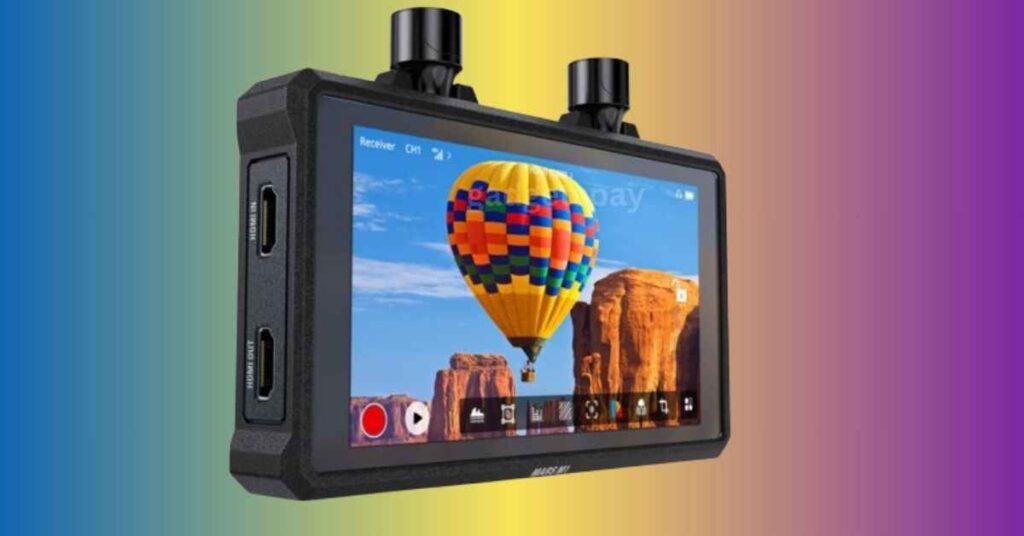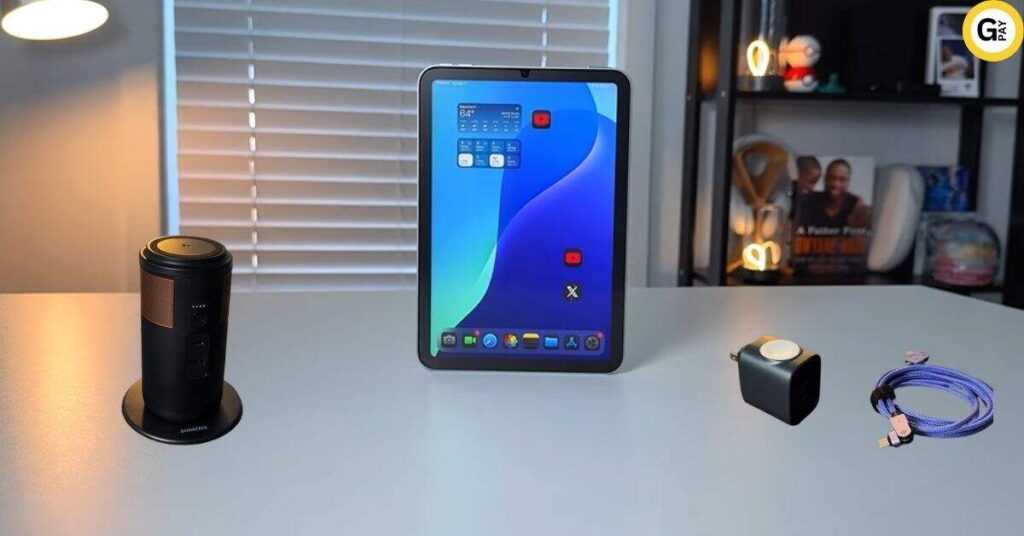As a videographer, capturing the perfect shot can be challenging when relying on small built-in camera screens. You know that feeling of trying to nail focus or adjust color settings on a screen that’s barely larger than your smartphone. It’s frustrating, and that’s exactly where the best on-camera monitors come into play.
Equipped with high resolution for sharp visuals, accurate color representation to ensure true-to-life footage, and portable designs for easy setup, these monitors are a game-changer. Whether you’re a professional filmmaker or a passionate hobbyist, upgrading to top-notch on-camera monitors can transform your workflow, allowing you to focus on what truly matters: capturing stunning, detailed, and vibrant videos
Here are the On-Camera Monitors
Lilliput A7S Review
If you’re new to videography and looking for a reliable on-camera monitor, check out the Lilliput A7S. First off, this device features a seven-inch IPS LCD panel with a 1920 by 1200 resolution. Imagine trying to focus on a tiny screen—super frustrating, right? With this larger, high-resolution display, you can easily frame and focus your shots, making your footage look professional even if you’re just starting out.
One of the coolest features is the 4K HDMI input and loop output. What does this mean for you? Well, you can connect your camera to the monitor and then send that signal to another monitor or device. This is perfect when you want to show your footage to a director or client without unplugging everything.
The Lilliput A7S also includes camera auxiliary functions like peaking, false color, and histogram. These tools help you get your exposure and focus just right. For instance, peaking highlights the edges of your subject in bright colors, making it super easy to ensure your shot is sharp.
What’s more, the monitor comes with customizable F1 and F2 keys. You can set these up as shortcuts to your most-used functions, saving you time and hassle. Durability is key, especially for beginners who might be a bit rough on their gear. This monitor is lightweight but sturdy, and it even comes with a silicone rubber case and sunshade for protection against drops and bright sunlight.
FeelWorld FW568 Review
For anyone looking for an affordable yet reliable on-camera monitor, the FeelWorld FW568 is your best bet. This device features a six-inch, 1920 by 1280 resolution screen, so you get a sharp and detailed image that makes focusing and framing a breeze. You know what it’s like to struggle to see fine details on a tiny, low-quality display—the FW568 solves that problem without breaking the bank.
One standout feature is the REC.709 color calibration, which ensures the colors you see on the monitor are true to life. This is crucial for achieving consistent results across different shoots. The 4K HDMI input and output mean you can connect this monitor to any DSLR or 4K camera and even daisy-chain it to other monitors. This is super handy for multi-camera setups or when the director wants a live feed.
Waveform and 3D LUT support are typically found inpricier models, but the FW568 lets you load up to 32 custom LUTs via USB, allowing you to preview your color grading on the spot. Imagine being in the field and wanting to see how your final edit will look—just load your LUT, and you’re good to go. The waveform monitoring helps you analyze image quality more accurately, ensuring you get the best shot every time.
Hollyland Mars M1 Review
If you’re after the best multifunctional on-camera monitor, the Hollyland Mars M1 is your go-to. This device isn’t just a monitor—it’s an all-in-one solution that combines a transmitter, receiver, and monitor. This means having fewer gadgets to lug around. With the Mars M1, you reduce your setup weight while increasing functionality. You can easily switch between transmitter and receiver modes and pair it with the Hollyland Mars 4K or other models for seamless wireless transmission.
One of the standout features is the Holly OS system, which brings a suite of advanced monitoring tools right to your fingertips. Ever struggle to get the perfect shot? Tools like waveform, vectorscope, and zebra patterns give you precise control over your image. These features help you fine-tune every detail, ensuring your footage looks stellar. The aspect mark and anamorphic de-squeeze options are particularly handy for filmmakers looking for specific framing and lens effects.
But it doesn’t stop there. The HollyView app elevates your on-set experience by acting as a single transmitter. This monitor supports up to four mobile devices for real-time monitoring. Picture this: you’re on set, and your director, producer, and DP all want to check the shot. With the HollyView app, everyone can preview and analyze the footage simultaneously using features like image overlay and sharpness adjustments.
Blackmagic Design Video Assist 7-Inch Review
If you’re in the market for a top-notch seven-inch on-camera monitor, the Blackmagic Design Video Assist 7-Inch is hard to beat. First off, that seven-inch 1920 x 1200 display is a dream. With this screen, you get a clear, expansive view, making it easier to frame and focus your shots accurately. The 2500 cd/m² brightness is another highlight. Ever tried shooting in bright sunlight and couldn’t see your screen? The Video Assist 7-Inch handles that with ease, ensuring you catch every detail regardless of the lighting conditions. Plus, it supports HDR, which means more vibrant and true-to-life colors in your footage.
This monitor also features 12G-SDI and HDMI inputs. What does that mean for you? It means you can connect it to both professional and consumer cameras, giving you versatility whether you’re on a high-end production or a simple shoot. The dual high-speed SD card slots and USB 3.1 Gen 1 Type-C port offer flexible recording options. You can record directly to SD cards or an external drive, ensuring you never run out of space mid-shoot.
Another game-changer is the support for Apple ProRes and Avid DNxHD codecs. These are industry-standard formats that give you high-quality footage and make post-production a breeze. Compared to more affordable models, the Blackmagic Design Video Assist 7-Inch offers features that truly elevate your work, making it an investment that’s well worth it.
PortKeys BM7-2 Review
If you’re looking for top-tier performance, the PortKeys BM7-2 stands out as the premium on-camera monitor that’s worth every penny. Imagine having the power to control your camera wirelessly with support for Red V-RAPTOR, BMPCC models, and various Sony cameras. This feature means you can adjust settings from a distance, making on-the-go shooting a breeze.
One of the most striking features is the 2200-nit brightness. Ever tried filming outdoors on a sunny day and struggled to see your screen? The BM7-II has you covered with a super bright display that ensures you catch every detail even in glaring sunlight. Plus, the monitor boasts an 85% P3 wide color gamut, translating to vivid, true-to-life colors that help you achieve the perfect look without guesswork.
The HDMI and SDI loop-out with LUT and Freeze Frame options are game-changers. If you’re serious about color grading, the ability to apply LUTs directly to the monitor lets you see your final look in real time. And the freeze frame feature? It’s like having a side-by-side comparison tool, letting you capture an image and compare it to your current shot to ensure consistency.
What really sets the BM7-II apart is its split-screen monitoring. You can load the same LUT on two screens, flip and mirror them independently. It’s like having two monitors in one—perfect for complex shoots where you need multiple angles or settings at once.
Atomos Ninja Review
If you’re serious about your videography, the Atomos Ninja is the best overall on-camera monitor you can get. Let’s break down why this gadget stands out. The 5.2-inch high-resolution screen is a game-changer, providing a crystal-clear, detailed view of your shot, making it easier to nail every time.
The 4K HDMI recording feature is another big win. This isn’t just about image quality; it’s about capturing footage in high-end formats like ProRes and DNxHD, which are industry standards. Think of it like upgrading from a basic point-and-shoot camera to a professional DSLR—the difference in quality and flexibility is immense.
Now, let’s talk about the Atomos OS. It’s user-friendly and packed with advanced tools like HDR support and focus and exposure aids. These tools help you manage light and color more effectively, ensuring your videos look professional. The ability to use lookup tables (LUTs) for color grading is like having a built-in film studio to tweak your visuals exactly how you want them.
One more thing: its compact and portable design means you can take it anywhere. Whether you’re filming a wedding, a documentary, or a YouTube video, the Atomos Ninja fits right in. Compared to more affordable models, the Ninja offers features that truly elevate your work, making it an investment that pays off in spades.













